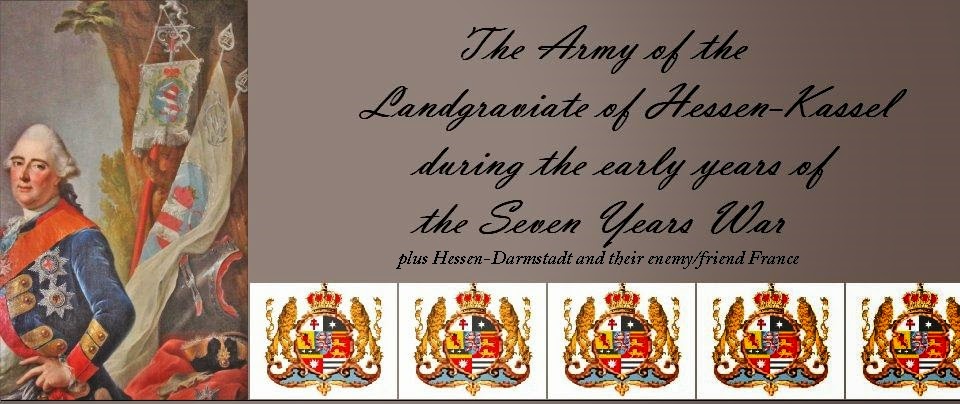Here is the Commander in Chief of the
Hessian Army – the Erbprince (Crown prince), assisted by Lieutenant-General Prince
Christian Ludwig of Isenburg-Birstein. On the base is also a Calvinist pastor
reading the Scriptures to his bored looking congregation. The Erbprinz has
converted to Catholicism and so is perhaps less than attentive and Prince
Christian just looks thoughtful.
Prince Frederick, the Erbprinz and future
Landgrave Frederick II, converted to Catholicism in 1749 and this army is
designed for the mid 1750s and this caused something of a difficulty in the
Calvinist state (see my early post on this blog titled Landgrave William VIII). Frederick is in his early
30s age-wise.
His companion is, on the
other hand, a seasoned old military salt probably sent by the Erbprinz’s father
to keep an eye on his son and make sure he does not do anything foolish with
the Landgraviate’s major money-spinning asset – it’s army. Christian Ludwig von Isenburg-Birstein was born on
October 10 1710 in Birnstein. He was the son of Prince Wolfgang Ernst I of
Isenburg and Budingen and Princess Friederike Elisabeth von Leiningen-Dagsburg.
In January 1741, he was appointed Chef
of the Reiter
Regiment von Diemar (K4). In 1746, he was apppointed major-general
and in 1750 lieutenant-general and Kommandeur
of the Hessian Corps in the Low Countries and, later, of the 8,000 strong
Hessian Corps stationed in England during 1756. A close friend of the
Landgrave, he left the army in 1757 and was awarded “Ritter des Deutschen Orden”.
His younger brother (who was killed at the battle of Bergen in the SYW),
commands the Grenadier brigade.
Finally, uniforms.
The Erbprinz wears the colonel’s uniform of his own Infantry Regiment (IR7) and
Prince Christian wears the colonel’s uniform of the 4th Horse
Regiment mentioned above. Two of the portraits show the Erbprinz post 1760 when
he has become Landgrave of Hessen Kassel. The third portrait shows a much
younger Erbprinz in his Prussian Infantry uniform but I don’t think he would
have worn this uniform when he was on the field commanding Hessian soldiers.















